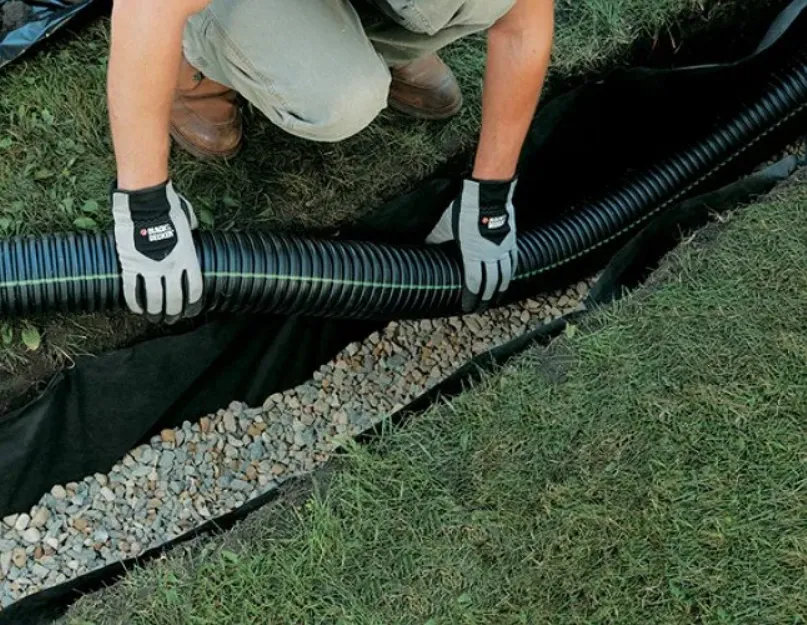
Best Time to Install a French Drain near Kitsap County, WA
You are looking at a soggy yard that never seems to dry out. Shoes sink into the lawn. The dog tracks mud into the house. Maybe you see puddles near your foundation after every storm. You wonder if a French drain would fix it, and you ask the big question: When should we do this so it actually works and does not drag on for weeks?
We get it. We live and work here too. At TH Excavation in Port Orchard, we build drainage systems all over Kitsap County and nearby Pierce, Mason, and Thurston Counties. Our job is to look past the puddles and find the real cause. Timing is a big part of that. If we choose the right window, your project runs smoother, costs make more sense, and your yard heals faster. If we choose the wrong window, the ground fights us, schedules slip, and you wait longer to see results.
Below, we break down the best timing for French drains in our local climate, what each season means for cost and speed, and how we plan the work so your yard stays neat and your drain stays reliable for years.

What a French Drain Is and How It Fixes Yard Drainage in Kitsap County
A French drain is a simple path for water to follow underground. We dig a trench, place a fabric liner, add a slotted pipe, and surround it with clean rock. Water that used to sit on your lawn or push toward your house now drops into that rock, enters the pipe, and flows to a safe discharge point.
Why it works here: Our peninsula gets steady rain and lots of clay and mixed soils. Water often cannot soak down fast enough. A French drain gives water a shortcut.
Signs You Need a French Drain at Your Port Orchard Home
Puddles that linger for more than a day after rain
Mushy lawn near walkways, patios, or play areas
Water pooling against the foundation or in planter beds
Slopes that push water toward the house, not away from it
Drainage that overwhelms downspouts or floods low spots
Mildew smells in crawl spaces or garages after storms
If you see two or more of these often, it is time to plan.
Kitsap County Rainfall Patterns and Why Timing Your Drainage Project Matters
In our area, the wet season can run long. Heavy rains raise groundwater, keep soil saturated, and make trenches cave in if you disturb them at the wrong time. The drier months give us firm ground, clean trench walls, and faster compaction. That is why timing shapes everything: the pace of work, the quality of the installation, and how fast your yard recovers.
Winter French Drain Installation in Kitsap County: Pros, Cons, and Reality
Pros
You see the worst water problems in real time. We can trace the flow while it is obvious.
Some schedules open up in winter. You may get onto the calendar sooner.
Cons
Wet, saturated soils slow excavation. Trenches can slump.
More site protection is needed. We bring mats and tarps, but traffic on soft lawns still leaves ruts.
Spoils are heavier and messy. Hauling can take longer.
If temperatures drop, compaction and finishes can be harder to complete.
Reality check
We do French drains in winter when needed, especially to protect a foundation or stop crawl space moisture. We plan for extra site care, more pumping or dewatering if needed, and careful staging. If time is flexible, we will tell you if waiting a few weeks for a drier window will save you stress and money.
Spring French Drain Installation in Kitsap County: Soil, Scheduling, and Runoff
Pros
Days start to warm up. Soil firms up from winter saturation.
We can see remaining problem areas during spring rain.
Good window to fix drainage before summer landscaping.
Cons
Early spring can still be sloppy. The first warm storms bring strong runoff.
Schedules get busy as many homeowners call at the same time.
Best use
Spring is a solid choice if your site is not fully saturated and we can dig without causing damage. It is also great if you plan new sod or plantings. Fix the water first, then build the yard you want.
Summer French Drain Installation in Kitsap County: Dry Ground, Faster Work, Fewer Delays
Pros
Dry soils mean clean trenches, safe pipe grades, and efficient work.
Fewer weather delays and cleaner job sites.
Best time for lawn repair, hardscape work, and final grading.
Cons
You may need to water new grass or plants more after installation.
Peak season can book up early.
Best use
If you want the smoothest experience and fastest yard recovery, summer is the top pick. The crew moves faster, compaction is better, and everything stays cleaner. If you can plan ahead, this is when we recommend most French drains.
Fall French Drain Installation near Kitsap County: Beating the First Big Storms
Pros
Ground is still firm from summer.
You can get ahead of winter storms.
Cool temps help new sod and seed root in.
Cons
Once the first big storm hits, ground can saturate quickly.
Shorter days mean tighter schedules.
Best use
Early fall is excellent. We aim to finish before the heavy rains. If we start too late, we will treat the site like a winter project and protect it accordingly.
Soils in Kitsap, Pierce, Mason, and Thurston Counties and How They Affect French Drains
Our area has a mix of glacial till, clay pockets, and sandy layers. What matters for your drain is how quickly water moves through the soil around the trench.
Clay-heavy zones hold water. We often use more rock and larger-diameter pipe, and we pay close attention to fabric selection to keep fines out.
Sandy or loamy zones drain faster. Trench work is cleaner, and groundwater drops quickly, which helps performance.
Mixed fill near homes can surprise you. We probe and test to set depth, slope, and discharge the right way.
We always adapt the design to the soil we find, not just what the map says.
Groundwater Levels, Slope, and Where a French Drain Should Go
A French drain only works if water can move downhill. We measure slope with lasers, note how water enters and leaves the area, and choose one of these discharge options:
Daylight outlet to a safe downhill area
Tie-in to a dry well or dispersion trench
Connection to approved storm infrastructure, where allowed
We set pipe depth so water can reach the drain without cutting roots or utilities. We also avoid steep grades inside the pipe. Gentle, even slope keeps water and fines moving without washing out the system.
Permits, Utility Locates, and Local Rules for French Drains in Kitsap County
Before we dig, we call in utility locates. That protects your gas, power, water, and communications lines. Some cities or HOAs ask for simple approvals, especially if we tie into storm systems or work near public right-of-way. We handle that process and let you know what is needed up front. If your drain discharges to daylight, we make sure the outlet is safe, stable, and not aimed at a neighbor’s property.
How TH Excavation Plans and Installs French Drains for Long-Term Results
Site walk and questions
We ask where you see pooling, how long it lasts, and what the yard is like after three days of no rain. Your daily experience helps us map the problem.Layout and laser levels
We mark the drain path, depth, and outlet. We plan access routes so your yard stays tidy.Utility locates and protection
We flag lines and use careful digging near any marks.Excavation
We cut a clean trench to the right depth and slope, then check with the laser again.Fabric, rock, and pipe
We line the trench with geotextile fabric, set the slotted pipe holes down or as specified, and surround it with washed rock.Backfill and wrap
We fold fabric over the top to keep soil out, then top with soil and restore the surface.Outlet and finish
We build a stable outlet with rock or a bubbler, then final grade and clean up.Walk-through and care tips
We show you the outlet, talk about yard recovery, and give maintenance guidance.
French Drain Installation Timeline: From Site Walk to Backfill and Clean-Up
Planning and utility locates: A few business days
Active digging and pipe installation: Often one to two days for a typical yard run
Restoration: Same day or next day, depending on scope
Total project window: Often within a week from start of work, longer if weather or access is tight
Dry seasons are faster. Wet seasons need more protection and patience.
Cost Factors for French Drains in Kitsap County (What Drives the Budget)
Length and depth of the trench
Soil type and groundwater level
Access and obstacles like fences, trees, patios, or tight gates
Rock type and quantity for proper bedding and backfill
Discharge method (daylight vs dry well vs approved connection)
Surface restoration (seed, sod, gravel, or hardscape repair)
We price only after we see the site. That way you get a number tied to real ground, not guesswork.
Common French Drain Mistakes in the Pacific Northwest and How We Avoid Them
No fabric or the wrong fabric leads to clogs. We use geotextile that filters fines but still lets water pass.
Too little rock starves the drain. We use enough clean rock to create real void space.
Bad slope holds water in the pipe. We shoot grades with lasers and verify before backfill.
Shallow outlets that backflow during storms. We build stable, low outlets or use approved dispersal.
Ignoring roof water overwhelms the yard. We often route downspouts to their own system so the French drain handles ground water, not roof runoff.
French Drain vs. Surface Drains vs. Dry Wells in Kitsap County (What Works Best and When)
French Drain: Best for soggy lawns, swales, and seepage along foundations. Moves subsurface water.
Surface Drains (catch basins, channel drains): Best for handling water that runs on top, like patio or driveway runoff.
Dry Wells/Dispersion Trenches: Best as end points when you need to hold and spread water safely underground.
Often the best answer is a combo system. We put surface drains where water runs and French drains where water sits. Then we send both to a dry well or safe outlet.
Yard Recovery After a French Drain: Protecting Lawns, Beds, and Hardscapes
We plan access paths with ground protection mats. We keep spoils in a tidy pile on tarps where possible. After backfill, we fine-grade, replace sod or seed, and refresh mulch beds that were disturbed. In summer and early fall, new sod roots well. In spring, seed takes quickly. In winter, we stabilize and return for final touches when conditions improve.
Maintenance Tips to Keep Your French Drain Working for Years
Keep the outlet clear of leaves and bark.
Do not plant deep-rooted trees over the drain path.
Avoid driving heavy equipment over the trench line.
If you have catch basins, lift the grates and scoop out debris a few times a year.
After big storms, take a quick look at the outlet to confirm steady flow.
A well-built French drain should work quietly in the background. Simple checks help it stay that way.
When You Should Not Install a French Drain (And Better Options Instead)
Your problem is roof water only. Start with downspout extensions, gutters, and surface drains.
The grade already slopes away and only one spot puddles. A small regrade may be enough.
You have a spring or constant seep. You may need a deeper curtain drain or a sump solution.
Discharge has nowhere safe to go. We might recommend a dispersion trench or dry well instead.
We will tell you honestly if a French drain is not the right tool.
So, What Is the Best Time of Year in Kitsap County?
If you want the smoothest install and quickest yard recovery, choose summer or early fall. The ground is firm, the trench stays clean, and restoration looks great. If you need help right now to protect a foundation or stop crawl space moisture, we can handle winter and spring projects with the right protections. The key is planning the design for your soil and slope, then scheduling the work for the best conditions we can get.
How to Schedule Your French Drain Project With TH Excavation in Port Orchard
Reach out with your top concerns. Tell us where you see water, how long it lasts, and any history with the problem.
On-site visit. We walk the property with you, take grades, and map the path.
Clear plan and price. We show you the design, discharge, and restoration plan so you know what to expect.
Pick the window. If timing is flexible, we will suggest the best season for clean work and a fast finish. If it is urgent, we will protect the site and move ahead safely.
Install and follow-up. We build it right, restore the yard, and check in after the next storm.
You do not have to live with a soggy, muddy yard. With the right plan and the right timing, a French drain can bring your lawn back to life and keep water where it belongs. If you are in Kitsap County or nearby Pierce, Mason, or Thurston, we are ready to help you choose the best window and get it done.

